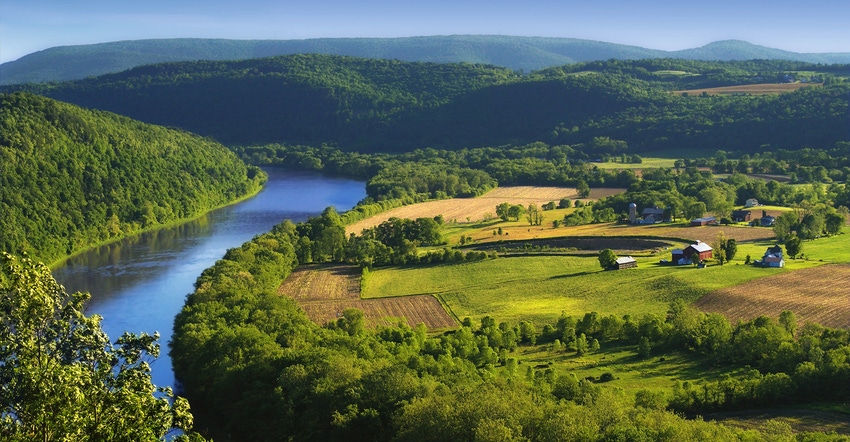
Yes, the Chesapeake Bay cleanup is making progress. In 2017, scientists recorded the highest number of acres of underwater grasses ever seen in the watershed. It was also the first time in the history of monitoring that total abundance surpassed 100,000 acres. And, more than 40% of bay tidal waters are now meeting water quality standards — the highest in Chesapeake Bay Program history.
But bay watersheds, according to environmentalists EPA, still have much more work to do. EPA recently sent letters to Pennsylvania, New York, Delaware, Maryland, Virginia, West Virginia and Washington, D.C. outlining what the agency expects to see in state and local implementation plans for Phase III of the bay’s Total Maximum Daily Load program.
That letter recognizes that states need to accelerate efforts to reduce polluted runoff from agricultural, urban and suburban areas, summarized William Baker, Chesapeake Bay Foundation president. It "specifically details where Pennsylvania has fallen short in the past. It outlines actions EPA may take to hold the commonwealth accountable. Now, Pennsylvania must develop a plan to close the gap and meet its 2025 commitments. If the plan does not, EPA must compel action."
What’s inside the plan
Phase III will provide clear roadmaps for how federal, state and local partners will work together to achieve their Chesapeake Bay TMDL nitrogen, phosphorus and sediment reduction goals, says Cosmo Servidio, EPA regional administrator. EPA worked alongside the seven bay jurisdictions with the aim of having all the practices and controls in place by 2025 to achieve the necessary nutrient and sediment reductions. Here are a few details deciphered from bureaucratic jargon:
• Specific actions are needed in each [state and watershed], some more than others. Pennsylvania is notably in the center of the regulatory bull’s-eye.
• For underperforming jurisdictions and pollutant source sectors "not on a trajectory to meet their Phase III WIP planning targets by 2025," EPA expects more detailed documentation of intended remedial actions.
• Full listing of all NPDES and CAFO permits, with updates on individual wasteload allocations or as part of aggregate wasteload allocations, will be required. That means closer scrutiny of ag and municipal permits.
• State and local jurisdictions will be encouraged to consider increased corollary benefits of best management practices such as wetlands, forest buffers and ecosystem restoration, and expand partnerships and funding for such projects.
• EPA wants to establish specific watershed load reduction goals for nitrogen, phosphorus and sediment as expressed as reductions, for example 300 pounds of phosphorus and 4,000 pounds for nitrogen, and yield-based goals such as 0.41 pounds of phosphorus per acre per year from developed lands.
• Local jurisdictions will be given alternative future land use scenarios to use for projecting 2025 growth conditions, such as forest conservation, growth management and agricultural conservation. Future growth forecasts would be reviewed every two years. Any planned or proposed offset should not negatively impact local water quality.
Dam controversy
Pennsylvania’s Conowingo Dam and reservoir has reached "dynamic equilibrium," with the reservoir at near-full capacity, according to the U.S. Geological Service. A Lower Susquehanna Army Corps of Engineers study concluded that more nutrients, not just sediment, are coming over the dam than was assumed in developing the 2010 Bay TMDL.
That loss of trapping capacity needs to be addressed to attain applicable state water quality standards in the Chesapeake Bay, noted the EPA letter. Reservoir sediment dredging and reuse move a step closer according to EPA. However, EPA’s document does not specifically address funding resources.
For more details, peruse EPA’s 18-page Phase 3 expectations.
About the Author(s)
You May Also Like




